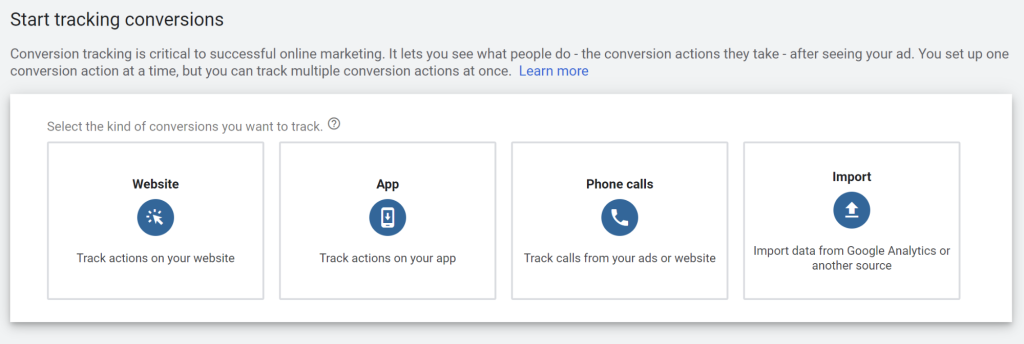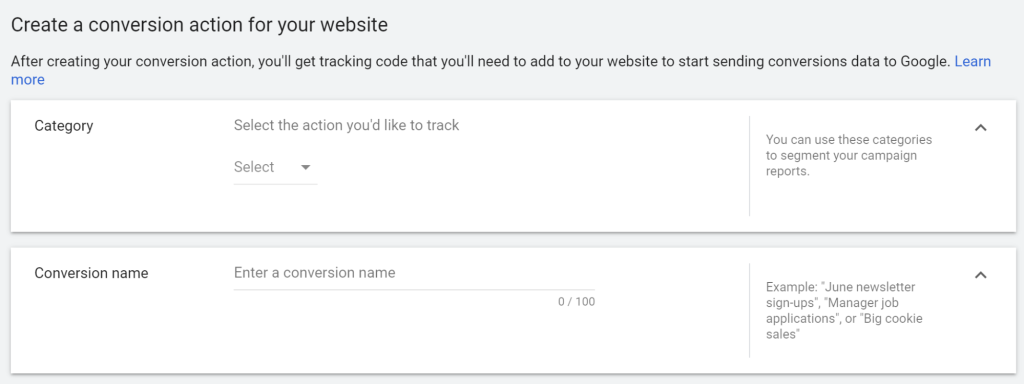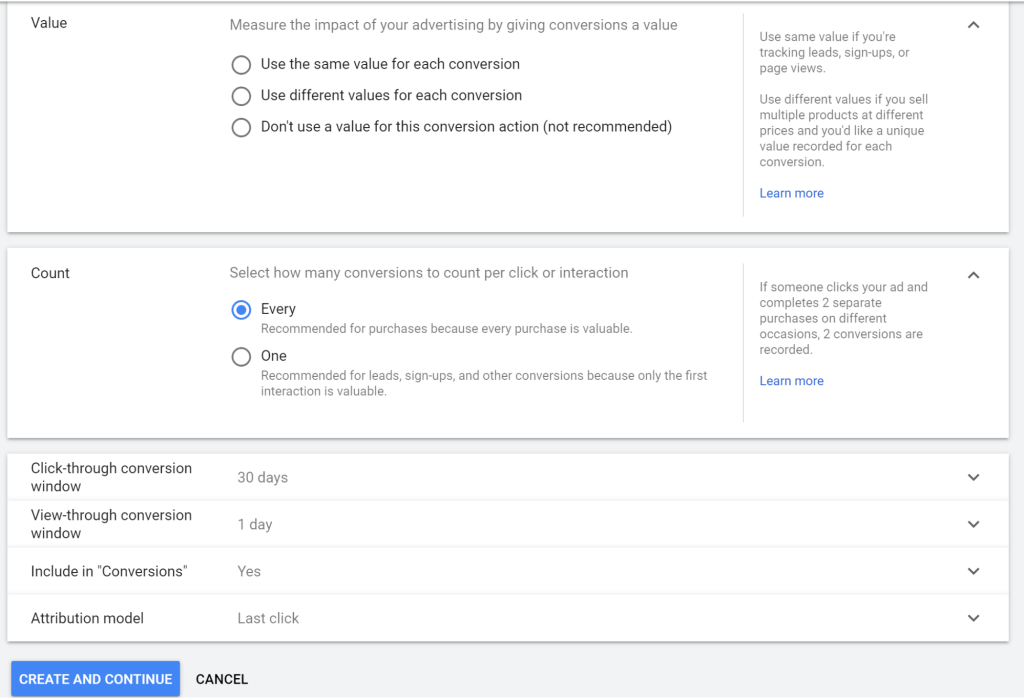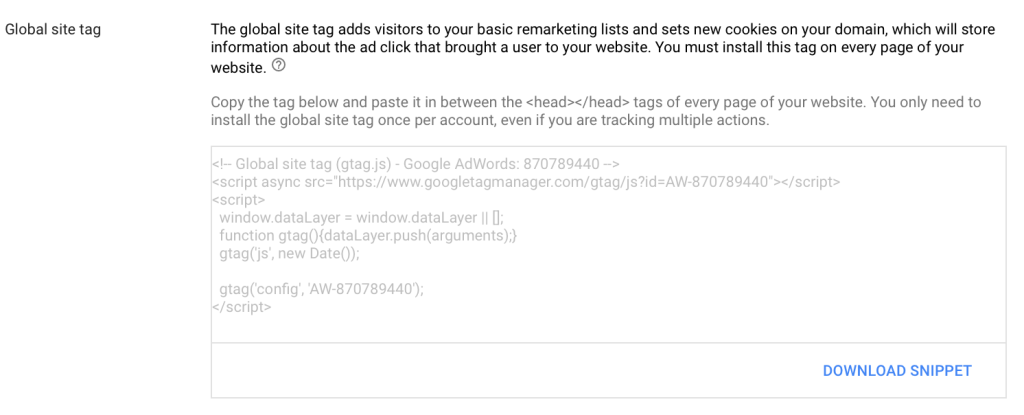How to Properly Set Up Your Google Analytics Tracking for Google Ads 


Tracking is the first step towards optimising your campaigns and getting the best return possible for your ad spend. However, a Disruptive Advertising Google Ads analysis found that a massive 42.3% of Google Ads accounts have no conversion tracking in place.
Without conversion tracking, you’re flying blind when it comes to analysing and improving your campaigns. Bottom line is, you NEED to know the results your Google Ads campaigns are driving to ensure your ads are working hard for your goals.
In this six-step guide, we take you through how to correctly set up and track conversions across Google Ads, Google Analytics, and a third-party CRM platform.
1. Install and verify your Google Ads tracking code
If you haven’t done this, hit ‘pause’ on your Google Ads campaigns IMMEDIATELY. Installing and verifying your Google Ads tracking tag is the absolute first thing you need to do before getting your campaigns up and running.
Good news: it’s not at all hard to set up. However, in our experience, we’ve seen clients’ conversion tags not firing properly, time and time again. At the end of the day, this hurts your reporting AND your ability to optimize your campaigns in the future.
So how do you set it up?
Start in your Google Ads dashboard, and head over to Tools > Measurement > Conversions. Once you’re on here, you’ll be prompted to create a new conversion type, such as the sales on your website or the number of calls from your ads:
After this, name your conversion and pick your conversion category. It might be something like “Add to cart page” or “New lead sign-up”.
After this, you can set a value for your conversion (if you know it), and how many conversions to count per click or interaction:
Done? Now it’s time to install your conversion tracking tag.
You’ll see two tracking tags in Google:
- The Global Site Tag: this can be used on all web pages, and for both conversion tracking and remarketing. This snippet will always stay the same on every page of your website.
- Event Code: This code tracks different types of conversions in detail, such as leads generated, phone calls, key page views, email newsletter sign-ups, and more. You’ll need to create a specific one for each conversion goal, and put this immediately after your global site tag on every page that you want to track.
When you have your tags, ask your developer to install the Global Site Tag and Event Tracking codes. Once you’ve done this, you need to verify that your Google Ads conversion tracking tag is working with Google Tag Assistant.
Follow these steps:
- Install the Google Tag Assistant Chrome extension.
- Open the “thank you” landing page or the web page you’re tracking that is a “success” after the desired action and then check the Tag Assistant.
- You should see “Adwords Conversion Tracking” firing correctly in blue. If it happens to be in red, then that means there is an issue.
2. Check you’re tracking the right conversions
It’s not enough just to have tracking. You need to be tracking the RIGHT conversions on the right pages, buttons, and calls if you want to truly evaluate the success of your Google Ads campaigns.
There are a few things you can track across your site, including:
- Webpage conversions, such as when someone makes a purchase or sale, when someone signs up via a form, when a lead submits a contact us request or when a key page is viewed (i.e. a ‘plans and pricing’ page).
- Call On-Site conversions that track when someone calls your business phone number directly from their phones.
- App conversions if you have an app available on the Google Play Store. App conversions can also be tracked to the iOS store for the ads that are served in mobile apps across the Google Display Network.
Make sure you properly understand your customer journey, then set up conversions to track key events along the way. You can also track multiple conversion actions for the same desired conversion — for example, a form submission can be a webpage conversion and a lead generation request.
3. Link your Google Ads and Google Analytics accounts
You need to have your Google Ads and Google Analytics accounts linked together for comprehensive reporting. This is because while Google Ads is GREAT at tracking actions on the platform, it offers up a pretty limited amount of data once someone lands on your website and you want to track their behavior flow.
This step is often the missing link between connecting your marketing actions with your revenue. That’s because linking your Google Ads and Google Analytics accounts can help you understand:
- Which keywords/campaigns are have better pages/sessions
- Which keywords/campaigns provide longer session times
- Which keywords/campaigns have the highest engagement and lowest bounce rate
- Where people are navigating to once they visit your website
- Where potential customers are getting stuck along the user journey
- Which content they’re engaging with once they land on your site
Connecting your Google Ads with Google Analytics also opens up countless opportunities for retargeting, and allows you to block advertising to people who have previously purchased.
So how do you link the two?
- Sign in to Google Analytics, click on Admin, and navigate to the property you want to link.
- In the Property column, click Google Ads Linking and select + New link group.
- Select the Google Ads accounts you want to link, then click Continue.
- Enter a link group title, and turn linking ON for each view in the property in which you want Google Ads data.
- Optional: select Enable Google Display Network Impression Reporting if you want to include this data in your view as well.
- Manually tag your Google Ads links by clicking on Advanced settings > Leave my auto-tagging settings as they are. If you’ve enabled auto-tagging in your Google Ads accounts, you can skip this step.
- Click Link accounts.
4. Use Google Analytics and Google Tag Manager to ensure your tags are firing correctly from start to finish
Following on, it’s crucial that you and your team are across the user behavior flow of Google Ads campaigns and any other external paid media activities you’re currently running. But first things first: you need to make sure everything is working properly
It’s important to have all tags and key user behavior tags firing to get an in-depth understanding of how to improve conversion rate optimization (CRO) and the user experience (UX) of your website.
Here are some of the most common mistakes we’ve observed that might be affecting your tags:
Mistake 1: Viewing the wrong Google Tag Manager account
If you’re tracking multiple sites or using multiple Tag Manager accounts, you might be using the wrong snippet from one account or container by accident.
Check whether your Google Tag Manager account is the same as in the code on your site:
Image source: Analytics Mania
Mistake 2: Not publishing the container
If you have everything set up but you’re seeing WAY too little data, chances are you might have forgotten to publish the container altogether.
You can avoid this by testing and going ‘live’ on your GTM interface by hitting the ‘submit’ button:
Mistake 3: Not completely removing old Google Analytics implementation
One of the biggest challenges that advertisers encounter is when they try to migrate from hardcoded Google Analytics to a more flexible Google Tag Manager implementation. If you’re a smaller website, this is easy: all you need to do is add a GTM container snippet, publish your tag and remove the previous GA tracking code from your site.
However, if you’re running a large site, you (or your developers) might forget to remove hardcoded link tracking events, which in turn can cause duplication of data. If you’ve recently changed from GA to GTM and you’re seeing issues with your tracking, a rogue old code could be the culprit.
Mistake 4: Tracking too many events or using too many auto-event listeners
Data is great, but having too much data can slow your GTM containers to a grinding halt. Every line of code is an action that needs to be executed, and the more codes you have, the slower your website becomes.
Create a measurement plan with key events that you want to track, and focus ONLY on tracking these. If you’re already using a bunch of auto-event listeners, go back and look at which ones you’ve used over the past 6 months or year. Eliminate any that you don’t need, and you’ll be able to cut through the noise to measure the numbers that matter.
Mistake 5: Having typos in the code
This one seems like a no-brainer, but you’d be surprised how often it happens. You might have a typo in your trigger conditions, or in the names of variables — or you may have put a lowercase “s” instead of an uppercase one (most GTM fields are case-sensitive).
5. Install button tracking via Google Tag Manager
While this one is entirely optional, tracking button clicks can be incredibly telling when it comes to user behavior. It’s easy to set up, and you can’t underestimate the value of having the best data set at your fingertips.
Work with your developers to set up button tracking using these steps:
- Find your button on your website (for example, a ‘Contact us’ button or a ‘Add to cart’ button).
- Right-click the button to view the source code. Check the button class, as you will need to configure different triggers in GTM.
- Enable the variable in GTM by selecting Variables > Configure > Built-in Variables. Add your button class in here, based on your findings in step 2.
- Create a tag in GTM by selecting Tags > New and naming your tag. After that, head to Tag Configuration, select Google Analytics, and change ‘Pageview’ to ‘Event’. From here, you can set up your button click as an event that is reported in Google Analytics.
- Create a trigger to tell Google Tag Manager when a tag should (or shouldn’t) fire. You want your trigger only to fire when the button has been clicked. Select ‘Triggering’ for the tag, click on the blue plus sign to create a new trigger, name it, then configure it based on the variable you found in step 2.
- Preview the container in Google Tag Manager to make sure everything is working as it should.
- Now it’s time to test it in Google Analytics. Head over to GA, select ‘Real-Time’, then Events. From here, you’ll be able to see whether your tag is firing correctly.
- Once you see the data, it’s time to head back to GTM and publish the container.
As a general rule of thumb, it’s a good idea to start tracking button clicks after you pass the 3,000 unique visitors mark.
After this is done, you can view it with Google Analytics (or your preferred analytics tool) to create advanced behavior flows and better map your user’s journey. This is amazing for making improvements in UX and CRO.
6. Track and analyze performance via another sales, marketing and CRM platform
Google Analytics is a powerful platform, but it has its limitations. If you want to truly evaluate the entire buyer journey, consider using an end-to-end platform like Salesforce, InfusionSoft, Marketo or Hubspot. These tools help you track your analytics from all sources coming to your site, and allow you to follow that through as sales convert into your CRM system.
Having an accurate picture and understanding end-to-end from campaigns you’re running, interaction on your site, goals and then onboarding flow process of users can really help make better growth/marketing decisions.
This can be invaluable for your team when it comes to monitoring trends, assessing touchpoints, and closing opportunities. Of course, it’s easier said than done to get this all set up. However, it’s worth the investment and time to get it right.
















